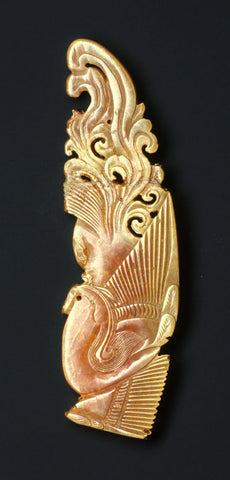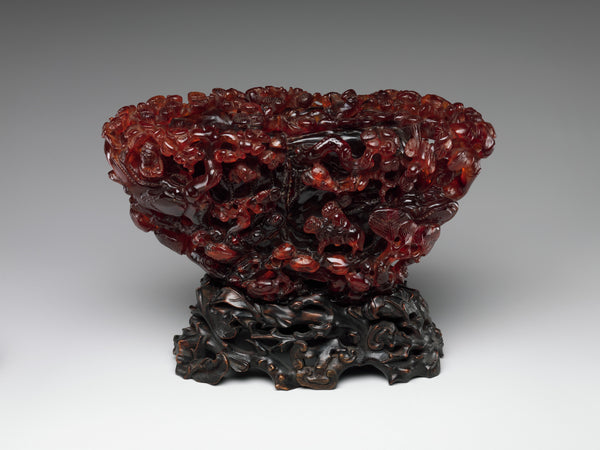8% off orders over $100, 15% off orders over $150, 20% off orders over $300.
Menu
-
- Specials
-
Types
-
Symbols
- Auspicious Cloud | Heaven
- Lotus | Purity & Elevation
- Phoenix | Rebirth and Fidelity
- The Nine | Eternity and Completeness
- Bamboo | Strength and Resilience
- Ruyi | Wish Fulfillment
- Moon | Mystery & Elegance
- Herbal Locket | Hidden Protection
- Tassel | Elegant Charm
- Butterfly and Flower | Love
- Plum Blossom | Endurance and Resilience
- Chinese Knot | Harmony, Tradition, Legacy
- Pumpkin | Prosperity & Abundance
- Pipa | Celestial Music
- Hulu Gourd | Protection and Prosperity
- Fish | Prosperity
-
Collections
- Atlantis
- Revive Your Inner Kingdom
- Auspicious Origin
- Auspicious Flower
- Udumbara Flower
- Return to Origin
- Celestial Cloud
- Elf Forest
- Gold Lotus
- Serene Lotus
- Pearl Elegance
- Radiance
- Metropolis Hermit
- The Nine
- Moon Goddess
- Tassel Elegance
- Chic Velvet Choker
- The Cloud
- Lotus Leaf
- Realm of Peace
- Four Season
-
Craftsmanship
-
Gemstones
- Pearl | Purity and Wisdom
- Jade | Stone of Heaven
- Turquoise | Protection and Healing
- Tridacna | Realm of Peace
- Lapis | Truth and Enlightenment
- Rose Quartz|Love, Healing, Compassion
- Amethyst | Clarity and Tranquility
- Amber | Vitality and Protection
- Carnelian | Courage and Vitality
- Coral | Protection and Prosperity
- Tourmaline | Energy and Balance
- Crystal | Healing and Clarity
-
Birthstone
-
Style
-
Price
-
- Jewelry Set
- Necklaces
- Earrings
- Bracelets
- Hair Jewelry
- Glasses Chains
- Rings
- Anklets
- Ornaments
- Login
-
English

8% off orders over $100, 15% off orders over $150, 20% off orders over $300.
Amber in Ancient China: Tears of a Tiger
February 02, 2016 3 min read 1 Comment

Something about amber made the ancients think of tears—mystical, golden tears.
In Greek mythology, the Heliades (nymph daughters of the Sun) watched as their brother chariot the Sun across the sky, and losing control of it, plummeted to his death. Their grieving tears flowed into the sea and came back as amber. Other Greeks hypothesized that amber comes from the congealed urine of a lynx. The Chinese said it transforms from the tears of a tiger as it breathes its last breath. Though one cat excretion sounds more poetic than the other, the similarities couldn’t possibly be coincidental.
Since ancient times, Chinese have called this organic gem “hu po” which means the courage or spirit of the tiger. There are tales about tigers whose souls enter the earth and become amber, a reflection of the age-old belief that the soul is material, not just ideological. Li Shizhen, Ming Dynasty physician and the author of the famed “Compendium of Materia Medica" ("Bencao Gangmu”) wrote that amber came from “the soul of a tiger descended to earth.”
Perhaps Li Shizhen M.D. and his contemporaries would have prescribed amber, ground up and ingested orally as pills, to calm the spirit, make the blood more active, and ease painful and frequent urination (a connection that validates the Greek lynx notion, perhaps?). This last property is corroborated by first century Roman writings. Being an organic substance—essentially the fossilized sap of eocene-era pines—it is readily processed by the human body if in the proper dosage.
Beautiful Women, Fractured States
In China as in Europe, amber was one of the most coveted status symbols among high level officials and prestigious families—and the prerogative of pretty women.
According to “The Notes of the Capital of Chang’an” (or “Miscellaneous Records of the Western Capital”), written in the Eastern Jin dynasty, Han Dynasty empress Zhao Feiyan loved to use amber as a pillow, believing that its natural fragrance would scent her body. In another record from Tang Dynasty, an amber bracelet given to a concubine as birthday gift was worth “1.7 million.”

Amber was so abundant to them while it was so scarce elsewhere because the Khitan controlled the areas in the northeast where amber is mined. Amber works flourished during this time, and after the Liao vanished, so did their artistry.
The price of amber in Han China skyrocketed when the Tang fractured into multiple states, including the “barbarian” Khitan Liao and Jurchen Jin periods (collectively 936–1125).
A tomb found in 1987 in what is today Inner Mongolia enclosed more amber than was ever found in any dynasty. Its inhabitant was a nomadic princess, dead at the age of 18 and interred with her 35-year-old husband. They were covered with amber—amber beads, ornaments, and perfectly preserved necklaces—more than 2,102 pieces total.
However, as when the areas of China were reunited again in the Mongol-led Yuan Dynasty (1271–1368), the free flow of amber resumed, resulting in elaborate decorative works, including this Qing Dynasty openwork tinder box.
Having survived from an age when earth had just bidden farewell to dinosaurs, amber has come a long way, and still has many more stories to tell.
This article is part of the Divine Land Gemstone Compendium, a weekly series by Yun Boutique exploring the gemstones of ancient China and their significance to Chinese culture. See the full series here. Subscribe to the email newsletter to receive future installments.
Produced and edited by Christine Lin. Researched by Ariel Tian.
1 Response
Leave a comment
Subscribe
Sign up to get the latest on sales, new releases and more …



Alison Hamilton
January 21, 2017
I was just looking at your Amber in Ancient China: History and Mythology – Yun Boutique website and see that your website has the potential to get a lot of visitors. I just want to tell you, In case you didn’t already know… There is a website service which already has more than 16 million users, and the majority of the users are looking for topics like yours. By getting your website on this network you have a chance to get your site more visitors than you can imagine. It is free to sign up and you can find out more about it here: http://s.t0m-s.be/5q – Now, let me ask you… Do you need your website to be successful to maintain your business? Do you need targeted traffic who are interested in the services and products you offer? Are looking for exposure, to increase sales, and to quickly develop awareness for your site? If your answer is YES, you can achieve these things only if you get your site on the service I am describing. This traffic service advertises you to thousands, while also giving you a chance to test the network before paying anything at all. All the popular sites are using this network to boost their traffic and ad revenue! Why aren’t you? And what is better than traffic? It’s recurring traffic! That’s how running a successful website works… Here’s to your success! Find out more here: http://thfox.com/500s